Title Page
Abstract/Keywords
Introduction
Notice to users
Participants
CONTENTS
1. (Changes to) Introduction
1.2 Notation
1.3 Normative References
1.4 Definitions
1.5 Abbreviations
22. (Changes to) Reconciliation Sublayer (RS) and Media Independent Interface (MII)
22.2.4 Management functions
30. (Changes to) 10 Mb/s, 100 Mb/s, 1000 Mb/s and 10 Gb/s Management
30.1 Overview
30.1.1 Scope
30.1.2 Relationship to objects in IEEE 802.1F
30.1.4 Management model
30.2.3 Containment
30.2.5 Capabilities
30.3.4 PAUSE entity managed object class
30.3.5 MPCP managed object class
30.3.6 OAM object class
30.3.7 OMPEmulation managed object class
30.11 Layer Management for Physical Medium Entity (PME)
30.11.1 PAF managed object class
30.11.2 PME managed object class
45. (Changes to) Management Data Input/Output (MDIO) Interface
45.1 Overview
45.1.2 Application
45.2 MDIO interface registers
45.2.1 PMA/PMD registers
45.2.3 PCS registers
45.2.6 TC registers
45.2.7 Clause 22 extension registers
45.5 Protocol Implementation Conformance Statement (PICS) proforma for Clause 45, MDIO/MDC management interface
(Changes to) Annex A (informative) Bibliography
(Changes to) Annex 30A (normative) GDMO specification for IEEE 802.3 managed object classes
(Changes to) Annex 30B (normative) GDMO and ASN.1 definitions for management
(Changes to) Annex 31A (normative) MAC Control opcode assignments
(Changes to) Annex 43B (normative) Requirements for support of Slow Protocols
56. Introduction to Ethernet for subscriber access networks
56.1 Overview
56.1.1 Summary of P2P sublayers
56.1.2 Summary of P2MP sublayers
56.1.3 Physical layer signaling systems
56.1.4 Management
56.1.5 Unidirectional transmission
56.2 State diagrams
56.3 Protocol Implementation Conformance Statement (PICS) proforma
57. Operations, Administration, and Maintenance (OAM)
57.1 Overview
57.1.1 Scope
57.1.2 Summary of objectives and major concepts
57.1.3 Summary of non-objectives
57.1.4 Positioning of OAM within the IEEE 802.3 architecture
57.1.5 Compatibility considerations
57.1.6 State diagram conventions
57.2 Functional specifications
57.2.1 Interlayer service interfaces
57.2.2 Principles of operation
57.2.3 Instances of the MAC data service interface
57.2.4 Responsibilities of OAM client
57.2.5 OAM client interactions
57.2.6 Instances of the OAM internal service interface
57.2.7 Internal block diagram
57.2.8 OAM internal interactions
57.2.9 Modes
57.2.10 OAM events
57.2.11 OAM remote loopback
57.2.12 Unidirectional OAM operation
57.3 Detailed functions and state diagrams
57.3.1 State diagram variables
57.3.2 Control
57.3.3 Multiplexer
57.3.4 Parser
57.4 OAMPDUs
57.4.1 Ordering and representation of octets
57.4.2 Structure
57.4.3 OAMPDU descriptions
57.5 OAM TLVs
57.5.1 Parsing
57.5.2 Information TLVs
57.5.3 Link Event TLVs
57.6 Variables
57.6.1 Variable Descriptors
57.6.2 Variable Containers
57.6.3 Parsing
57.6.4 Variable Branch/Leaf examples
57.6.5 Variable Indications
57.7 Protocol Implementation Conformance Statement (PICS) proforma for Clause 57, Operations, Administration, and Maintenance (OAM)
57.7.1 Introduction
57.7.2 Identification
57.7.3 PICS proforma Tables for Operation, Administration, and Maintenance (OAM)
57.7.4 Link Event TLVs
57.7.5 Variables Descriptors and Containers
58. Physical Medium Dependent (PMD) sublayer and medium, type 100BASE-LX10 (Long Wavelength) and 100BASE-BX10 (BiDirectional Long Wavelength)
58.1 Overview
58.1.1 Goals and objectives
58.1.2 Positioning of this PMD set within the IEEE 802.3 architecture
58.1.3 Terminology and conventions
58.1.4 Physical Medium Dependent (PMD) sublayer service interface
58.2 PMD functional specifications
58.2.1 PMD block diagram
58.2.2 PMD transmit function
58.2.3 PMD receive function
58.2.4 100BASE-LX10 and 100BASE-BX10 signal detect function
58.3 PMD to MDI optical specifications for 100BASE-LX10
58.3.1 Transmitter optical specifications
58.3.2 Receiver optical specifications
58.4 PMD to MDI optical specifications for 100BASE-BX10
58.4.1 Transmit optical specifications
58.4.2 Receiver optical specifications
58.5 Illustrative 100BASE-LX10 and 100BASE-BX10 channels and penalties (informative)
58.6 Jitter at TP1 and TP4 for 100BASE-LX10 and 100BASE-BX10 (informative)
58.7 Optical measurement requirements
58.7.1 Test patterns
58.7.2 Wavelength and spectral width measurements
58.7.3 Optical power measurements
58.7.4 Extinction ratio measurements
58.7.5 Optical modulation amplitude (OMA) measurements (informative)
58.7.6 OMA relationship to extinction ratio and power measurements (informative)
58.7.7 Relative intensity noise optical modulation amplitude (RINxOMA) measuring procedure
58.7.8 Transmitter optical waveform (transmit eye)
58.7.9 Transmitter and dispersion penalty (TDP) measurement
58.7.10 Receiver sensitivity measurements
58.7.11 Stressed receiver conformance test
58.7.12 Jitter measurements (informative)
58.8 Environmental, safety and labeling
58.8.1 General safety
58.8.2 Laser safety
58.8.3 Installation
58.8.4 Environment
58.8.5 PMD labeling requirements
58.9 Characteristics of the fiber optic cabling
58.9.1 Fiber optic cabling model
58.9.2 Optical fiber and cable
58.9.3 Optical fiber connection
58.9.4 Medium Dependent Interface (MDI)
58.10 Protocol Implementation Conformance Statement (PICS) proforma for Clause 58, Physical Medium Dependent (PMD) sublayer and medium, type 100BASE-LX10 (Long Wavelength) and 100BASE-BX10 (BiDirectional Long Wavelength)
58.10.1 Introduction
58.10.2 Identification
58.10.3 PICS proforma tables for Physical Medium Dependent (PMD) sublayer and medium, type 100BASE-LX10 and 100BASE-BX10
59. Physical Medium Dependent (PMD) sublayer and medium, type 1000BASE-LX10 (Long Wavelength) and 1000BASE-BX10 (BiDirectional Long Wavelength)
59.1 Overview
59.1.1 Goals and objectives
59.1.2 Positioning of 1000BASE-LX10 and 1000BASE-BX10 PMDs within the IEEE 802.3 architecture
59.1.3 Terminology and conventions
59.1.4 Physical Medium Dependent (PMD) sublayer service interface
59.1.5 Delay constraints
59.2 PMD functional specifications
59.2.1 PMD block diagram
59.2.2 PMD transmit function
59.2.3 PMD receive function
59.2.4 PMD signal detect function
59.3 PMD to MDI optical specifications for 1000BASE-LX10
59.3.1 Transmitter optical specifications
59.3.2 Receiver optical specifications
59.4 PMD to MDI optical specifications for 1000BASE-BX10-D and 1000BASE-BX10-U
59.4.1 Transmit optical specifications
59.4.2 Receiver optical specifications
59.5 Illustrative 1000BASE-LX10 and 1000BASE-BX10 channels and penalties (informative)
59.6 Jitter specifications
59.7 Optical measurement requirements
59.7.1 Test patterns
59.7.2 Wavelength and spectral width measurements
59.7.3 Optical power measurements
59.7.4 Extinction ratio measurements
59.7.5 OMA measurements (informative)
59.7.6 OMA relationship to extinction ratio and power measurements (informative)
59.7.7 Relative intensity noise optical modulation amplitude (RIN12OMA)
59.7.8 Transmitter optical waveform (transmit eye)
59.7.9 Transmit rise/fall characteristics
59.7.10 Transmitter and dispersion penalty (TDP)
59.7.11 Receive sensitivity measurements
59.7.12 Total jitter measurements (informative)
59.7.13 Deterministic or high probability jitter measurement (informative)
59.7.14 Stressed receiver conformance test
59.7.15 Measurement of the receiver 3 dB electrical upper cutoff frequency
59.8 Environmental, safety and labeling specifications
59.8.1 General Safety
59.8.2 Laser safety
59.8.3 Installation
59.8.4 Environment
59.8.5 PMD labelling requirements
59.9 Characteristics of the fiber optic cabling
59.9.1 Fiber optic cabling model
59.9.2 Optical fiber and cable
59.9.3 Optical fiber connection
59.9.4 Medium Dependent Interface (MDI)
59.9.5 Single-mode fiber offset-launch mode-conditioning patch cord for MMF operation of 1000BASE-LX10
59.10 Protocol Implementation Conformance Statement (PICS) proforma for Clause 59, Physical Medium Dependent (PMD) sublayer and medium, type 1000BASE-LX10 (Long Wavelength) and 1000BASE-BX10 (BiDirectional Long Wavelength)
59.10.1 Introduction
59.10.2 Identification
59.10.3 Major capabilities/options
60. Physical Medium Dependent (PMD) sublayer and medium, type 1000BASE-PX10 and 1000BASE-PX20 (long wavelength passive optical networks)
60.1 Overview
60.1.1 Goals and objectives
60.1.2 Positioning of this PMD set within the IEEE 802.3 architecture
60.1.3 Terminology and conventions
60.1.4 Physical Medium Dependent (PMD) sublayer service interface
60.1.5 Delay constraints
60.2 PMD functional specifications
60.2.1 PMD block diagram
60.2.2 PMD transmit function
60.2.3 PMD receive function
60.2.4 PMD signal detect function
60.2.5 PMD transmit enable function for ONU
60.3 PMD to MDI optical specifications for 1000BASE-PX10-D and 1000BASE-PX10-U
60.3.1 Transmitter optical specifications
60.3.2 Receiver optical specifications
60.4 PMD to MDI optical specifications for 1000BASE-PX20-D and 1000BASE-PX20-U
60.4.1 Transmit optical specifications
60.4.2 Receiver optical specifications
60.5 Illustrative 1000BASE-PX10 and 1000BASE-PX20 channels and penalties (informative)
60.6 Jitter at TP1-4 for 1000BASE-PX10 and 1000BASE-PX20 (informative)
60.7 Optical measurement requirements
60.7.1 Frame based test patterns
60.7.2 Wavelength and spectral width measurements
60.7.3 Optical power measurements
60.7.4 Extinction ratio measurements
60.7.5 OMA measurements (informative)
60.7.6 OMA relationship to extinction ratio and power measurements (informative)
60.7.7 Relative intensity noise optical modulation amplitude (RIN15OMA)
60.7.8 Transmitter optical waveform (transmit eye)
59.7.9 Transmitter and dispersion penalty (TDP)
60.7.10 Receive sensitivity measurement
60.7.11 Stressed receive conformance test
60.7.12 Jitter measurements (informative)
60.7.13 Other measurements
60.8 Environmental, safety, and labeling
60.8.1 General safety
60.8.2 Laser safety
60.8.3 Installation
60.8.4 Environment
60.8.5 PMD labelling requirements
60.9 Characteristics of the fiber optic cabling
60.9.1 Fiber optic cabling model
60.9.2 Optical fiber and cable
60.9.3 Optical fiber connection
60.9.4 Medium Dependent Interface (MDI)
60.10 Protocol Implementation Conformance Statement (PICS) proforma for Clause 60, Physical Medium Dependent (PMD) sublayer and medium, type 1000BASE-PX10 and 1000BASE-PX20 (long wavelength passive optical networks)
60.10.1 Introduction
60.10.2 Identification
60.10.3 Major capabilities/options
60.10.4 PICS proforma tables for Physical Medium Dependent (PMD) sublayer and medium, type 1000BASE-PX10 and 1000BASE-PX20 (long wavelength passive optical networks)
61. Physical Coding Sublayer (PCS), Transmission Convergence (TC) sublayer, and common specifications, type 10PASS-TS and type 2BASE-TL
61.1 Overview
61.1.1 Scope
61.1.2 Objectives
61.1.3 Relation of 2BASE-TL and 10PASS-TS to other standards
61.1.4 Summary
61.1.5 Application of 2BASE-TL, 10PASS-TS
61.2 PCS functional specifications
61.2.1 MAC-PHY Rate Matching functional specifications
61.2.2 PME Aggregation functional specifications
61.2.3 PCS sublayer: Management entity signals
61.3 TC sublayer functional specifications
61.3.1 The g-interface
61.3.2 The a(b)-interface
61.3.3 TC functions
61.4 Handshaking and PHY control specification for type 2BASE-TL and 10PASS-TS
61.4.1 Overview
61.4.2 Replacement of 1, “Scope”
61.4.3 Changes to 6.1, “Description of signals”
61.4.4 Changes to 9.4, “Standard information field (S)”
61.4.5 Changes to 9.5, “Non-standard information field (NS)”
61.4.6 Changes to Annex A-B and Appendix I-VI
61.4.7 PME Aggregation - remote access of PME Aggregation registers
61.5 Link segment characteristics
61.6 MDI specification
61.7 System considerations
61.8 Environmental specifications
61.9 PHY labeling
61.10 Protocol Implementation Conformance Statement (PICS) proforma for Clause 61, Physical Coding Sublayer (PCS), Transmission Convergence (TC) sublayer, and common specifications type 10PASS-TS, 2BASE-TL
61.10.1 Introduction
61.10.2 Identification
61.10.3 Major capabilities/options
61.10.4 PICS proforma tables for the Physical Coding Sublayer (PCS), Transmission Convergence (TC) sublayer, and common specifications type 10PASS-TS, 2BASE-TL
62. Physical Medium Attachment (PMA) and Physical Medium Dependent (PMD), type 10PASS-TS
62.1 Overview
62.1.1 Scope
62.1.2 Objectives
62.1.3 Relation of 10PASS-TS to other standards
62.1.4 Summary of Physical Medium Attachment (PMA) specification
62.2 PMA functional specifications
62.2.1 PMA functional diagram
62.2.2 PMA functional specifications
62.2.3 General exceptions
62.2.4 Specific requirements and exceptions
62.3 PMD functional specifications
62.3.1 PMD Overview
62.3.2 PMD functional specifications
62.3.3 General exceptions
62.3.4 Specific requirements and exceptions
62.3.5 Transmission medium interface characteristics
62.4 Protocol Implementation Conformance Statement (PICS) proforma for Clause 62, Physical Medium Attachment (PMA) and Physical Medium Dependent (PMD), type 10PASS-TS
62.4.1 Introduction
62.4.2 Identification
62.4.3 Major capabilities/options
62.4.4 PICS proforma tables for the Physical Medium Attachment (PMA) and Physical Medium Dependent (PMD), type 10PASS-TS
63. Physical Medium Attachment (PMA) and Physical Medium Dependent (PMD), type 2BASE-TL
63.1 2BASE-TL Overview
63.1.1 Scope
63.1.2 Objectives
63.1.3 Relation of 2BASE-TL to other standards
63.1.4 Summary of Physical Medium Attachment (PMA) specification
63.1.5 Summary of Physical Medium Dependent (PMD) specification
63.2 2BASE-TL PMA functional specifications
63.2.1 General exceptions
63.2.2 Specific requirements and exceptions
63.3 2BASE-TL PMD functional specifications
63.3.1 General exceptions
63.3.2 Specific requirements and exceptions
63.4 Protocol Implementation Conformance Statement (PICS) proforma for Clause 63, Physical Medium Attachment (PMA) and Physical Medium Dependent (PMD), type 2BASE-TL
63.4.1 Introduction
63.4.2 Identification
63.4.3 Major capabilities/options
63.4.4 PICS proforma tables for the Physical Medium Attachment (PMA) and Physical Medium Dependent (PMD) sublayers, type 2BASE-TL
64. Multi-point MAC Control
64.1 Overview
64.1.1 Goals and objectives
64.1.2 Position of Multi-point MAC Control within the IEEE 802.3 hierarchy
64.1.3 Functional block diagram
64.1.4 Service interfaces
64.1.5 State diagram conventions
64.2 Multi-point MAC Control operation
64.2.1 Principles of Multi-point MAC Control
64.2.2 Multi-point transmission control, Control Parser, and Control Multiplexer
64.3 Multi-Point Control Protocol (MPCP)
64.3.1 Principles of Multi-Point Control Protocol
64.3.2 Compatibility considerations
64.3.3 Discovery Processing
64.3.4 Report Processing
64.3.5 Gate Processing
64.3.6 MPCPDU structure and encoding
64.4 Protocol Implementation Conformance Statement (PICS) proforma for Clause 64, Multi-point MAC Control
64.4.1 Introduction
64.4.2 Identification
64.4.3 Major capabilities/options
64.4.4 PICS proforma tables for Multi-point MAC Control
65. Extensions of the Reconciliation Sublayer (RS) and Physical Coding Sublayer (PCS) / Physical Media Attachment (PMA) for 1000BASE-X for Multi-Point Links and Forward Error Correction
65.1 Extensions of the Reconciliation Sublayer (RS) for Point to Point Emulation
65.1.1 Overview
65.1.2 Principle of operation
65.1.3 Functional specifications
65.2 Extensions of the physical coding sublayer for data detection and forward error correction
65.2.1 Overview
65.2.2 Burst-mode operation
65.2.3 Forward error correction
65.3 Extensions to PMA for 1000BASE-PX
65.3.1 Extensions for 1000BASE-PX-U
65.3.2 Extensions for 1000BASE-PX-D
65.3.3 Delay variation requirements
65.4 Protocol Implementation Conformance Statement (PICS) proforma for Clause 65, Extensions of the Reconciliation Sublayer (RS)...
65.4.1 Introduction
65.4.2 Identification
65.4.3 Major capabilities/options
65.4.4 PICS proforma tables for Extensions of Reconciliation Sublayer (RS) and Physical Coding Sublayer (PCS) / Physical Media Attachment (PMA) for 1000BASE-X for Multi-Point Links and Forward Error Correction.
66. Extensions of the 10 Gb/s Reconciliation Sublayer (RS), 100BASE-X PHY, and 1000BASE-X PHY for unidirectional transport
66.1 Modifications to the physical coding sublayer (PCS) and physical medium attachment (PMA) sublayer, type 100BASE-X
66.1.1 Overview
66.1.2 Functional specifications
66.2 Modifications to the physical coding sublayer (PCS) and physical medium attachment (PMA) sublayer, type 1000BASE-X
66.2.1 Overview
66.2.2 Functional specifications
66.3 Modifications to the reconciliation sublayer (RS) for 10 Gb/s operation
66.3.1 Overview
66.3.2 Functional specifications
66.4 Protocol Implementation Conformance Statement (PICS) proforma for Clause 66, Extensions of the 10 Gb/s Reconciliation Sublayer (RS), 100BASE-X PHY, and 1000BASE-X PHY for unidirectional transport
66.4.1 Introduction
66.4.2 Identification
66.4.3 Major capabilities/options
66.4.4 PICS proforma tables for Extensions of the 10 Gb/s Reconciliation Sublayer (RS), 100BASE-X PHY, and 1000BASE-X PHY for unidirectional transport
67. System considerations for Ethernet subscriber access networks
67.1 Overview
67.2 Discussion and examples of EFM P2MP topologies
67.2.1 Trade off between link span and split ratio
67.2.2 Single splitter topology
67.2.3 Tree-and-branch topology
67.2.4 Interoperability between certain 1000BASE-PX10 and 1000BASE-PX20
67.3 Hybrid Media topologies
67.4 Topology limitations
67.5 Deployment restrictions for subscriber access copper
67.6 Operations, Administration, and Maintenance
67.6.1 Unidirectional links
67.6.2 Active and Passive modes
67.6.3 Link status signaling in P2MP networks
Annex 4A (normative) Simplified full duplex media access control
Annex 22D (informative) Clause 22 access to Clause 45 MMD registers
Annex 58A (informative) Frame based testing
Annex 61A (informative) EFM Copper examples
Annex 61B (normative) Handshake codepoints for 2BASE-TL and 10PASS-TS
Annex 62A (normative) PMD profiles for 10PASS-TS
Annex 62B (normative) Performance guidelines for 10PASS-TS PMD profiles
Annex 62C (informative) 10PASS-TS Examples
Annex 63A (normative) PMD Profiles for 2BASE-TL
Annex 63B (normative) Performance guidelines for 2BASE-TL PMD profiles
Annex 67A (informative) Environmental characteristics for Ethernet subscriber access networks
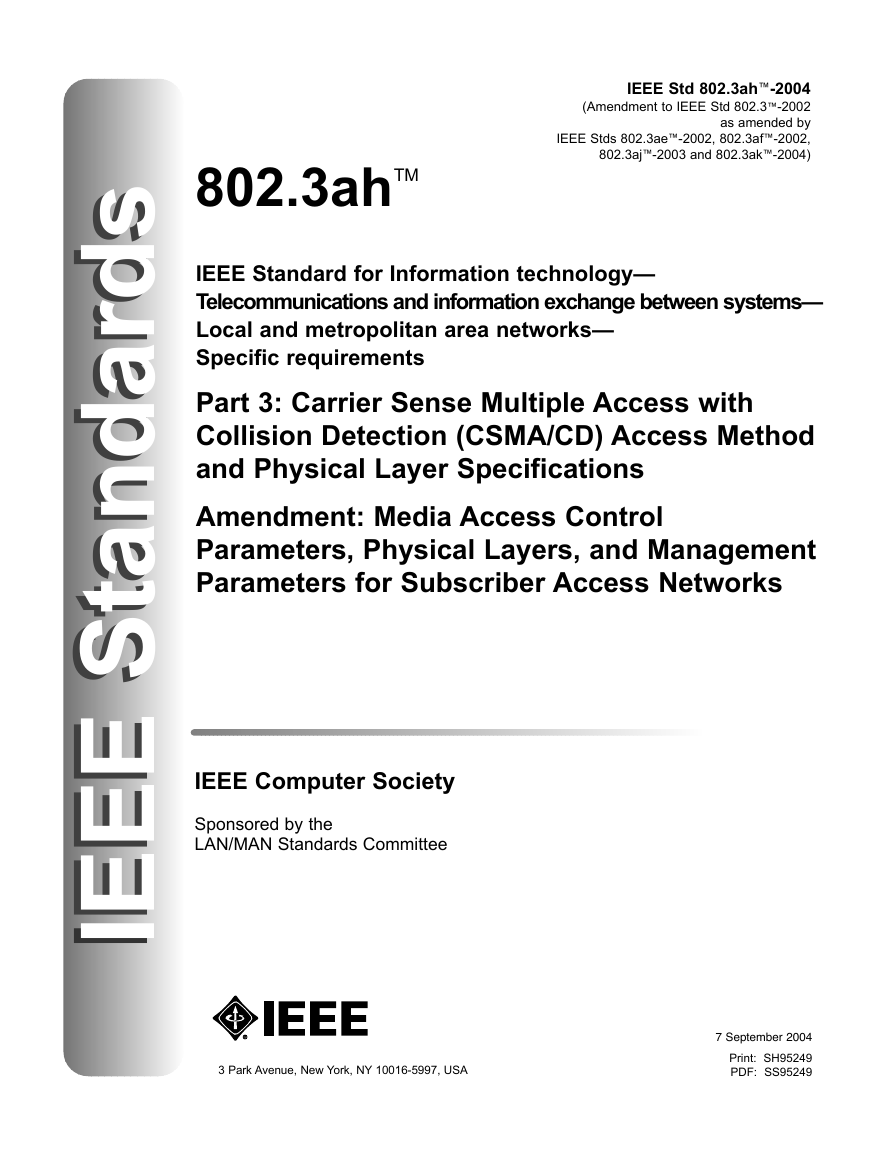
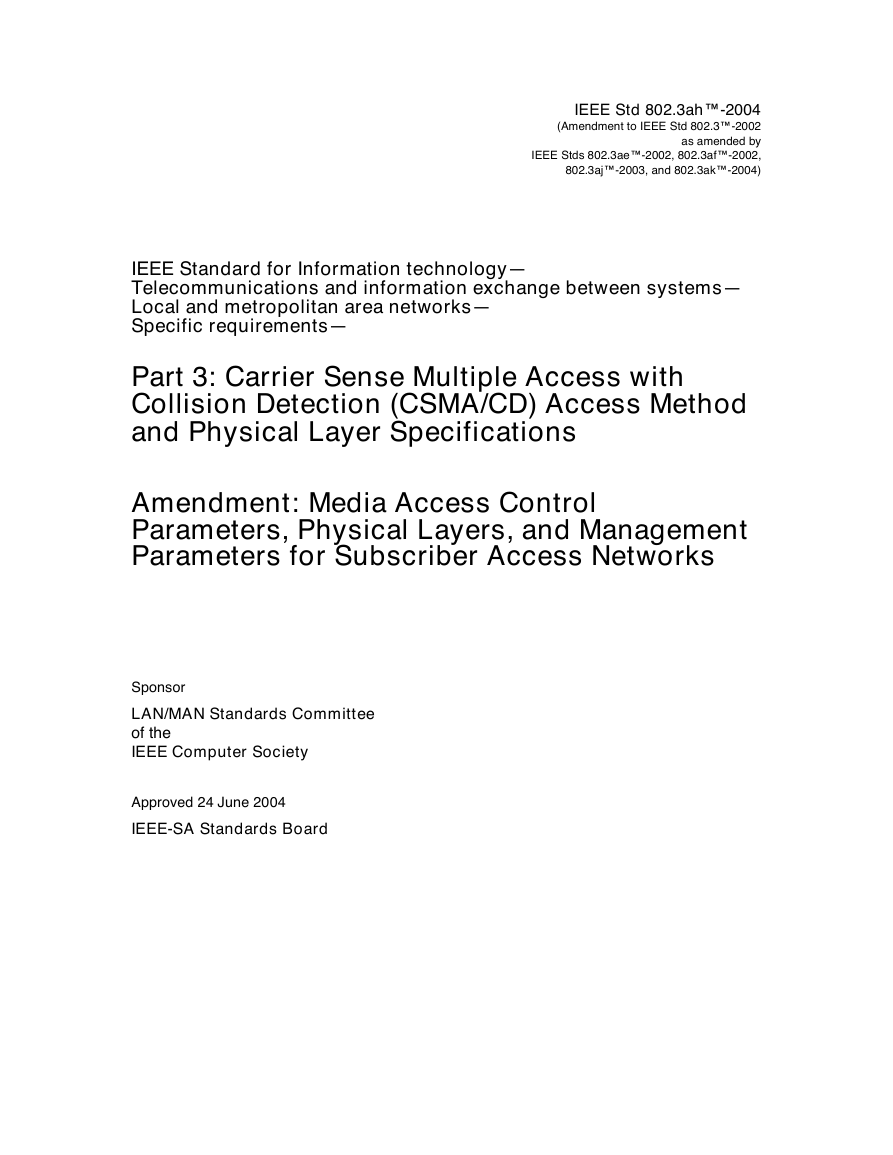
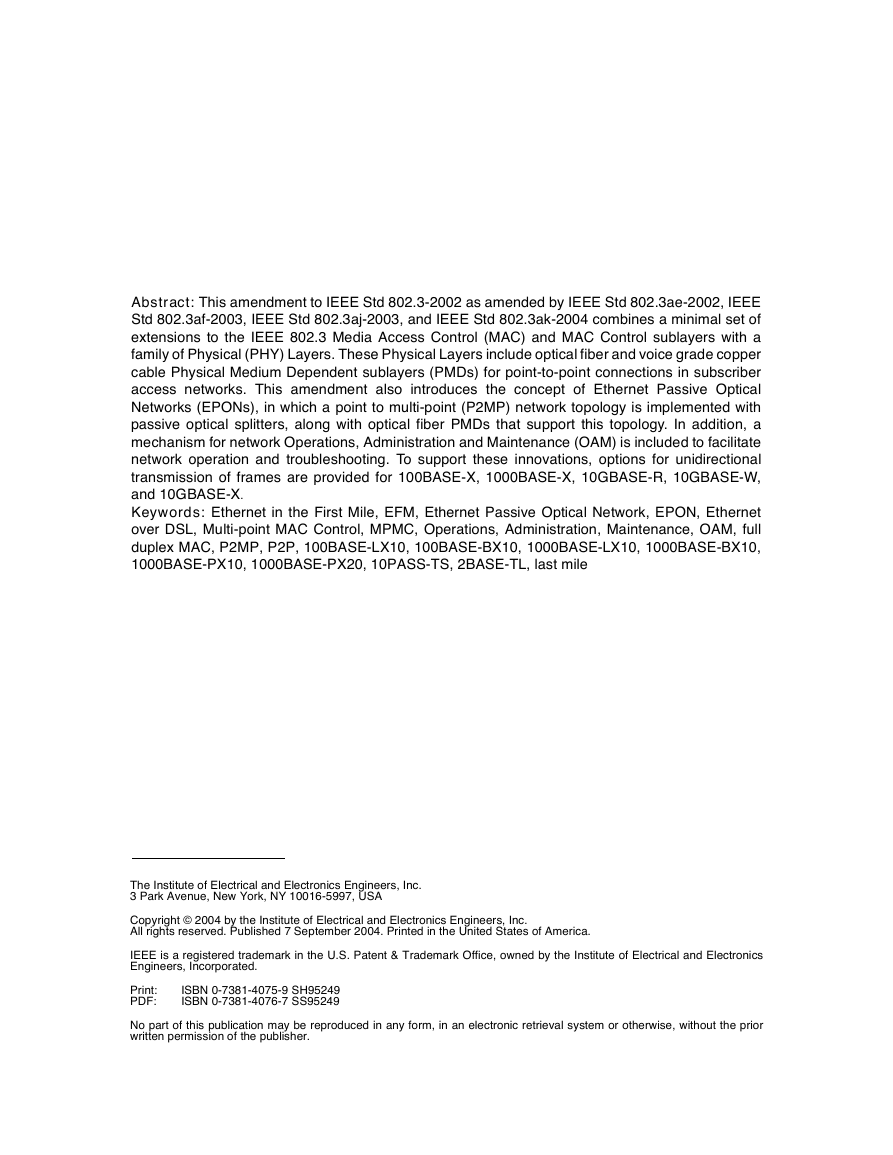
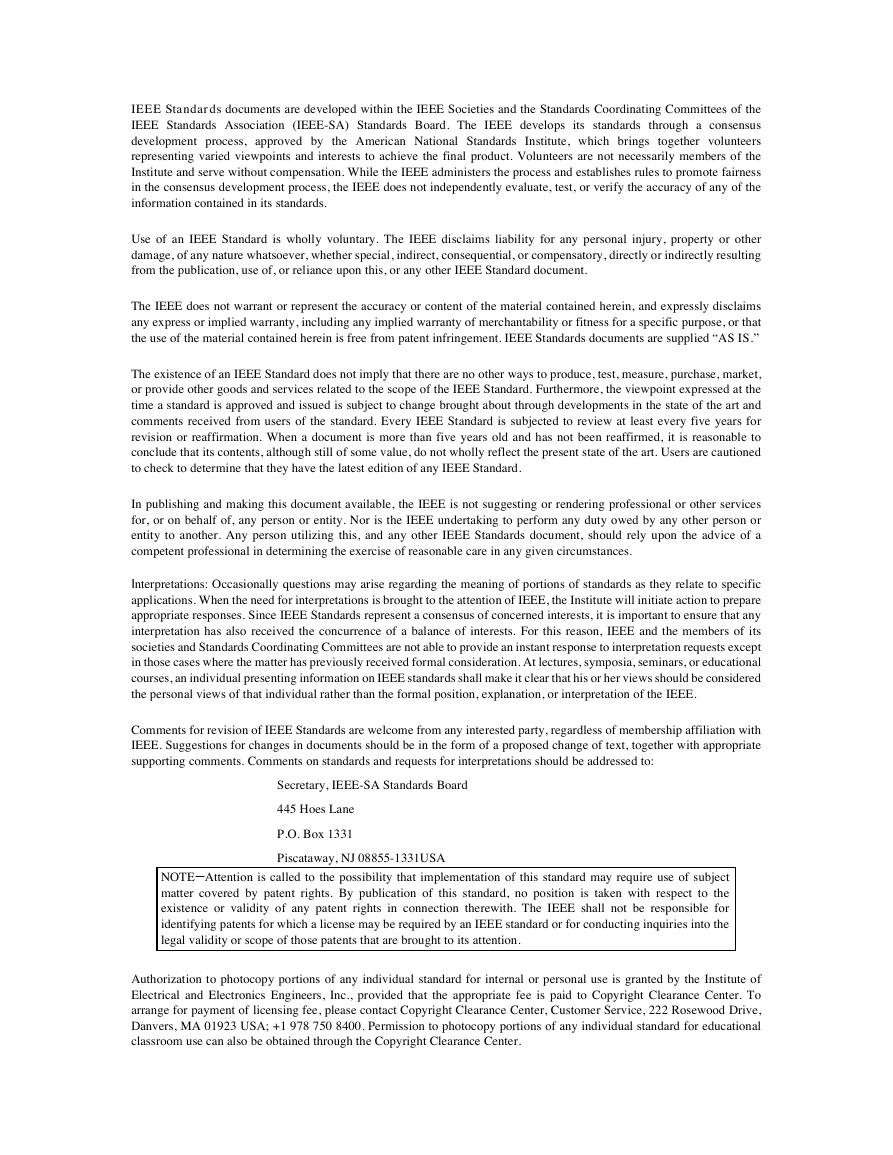
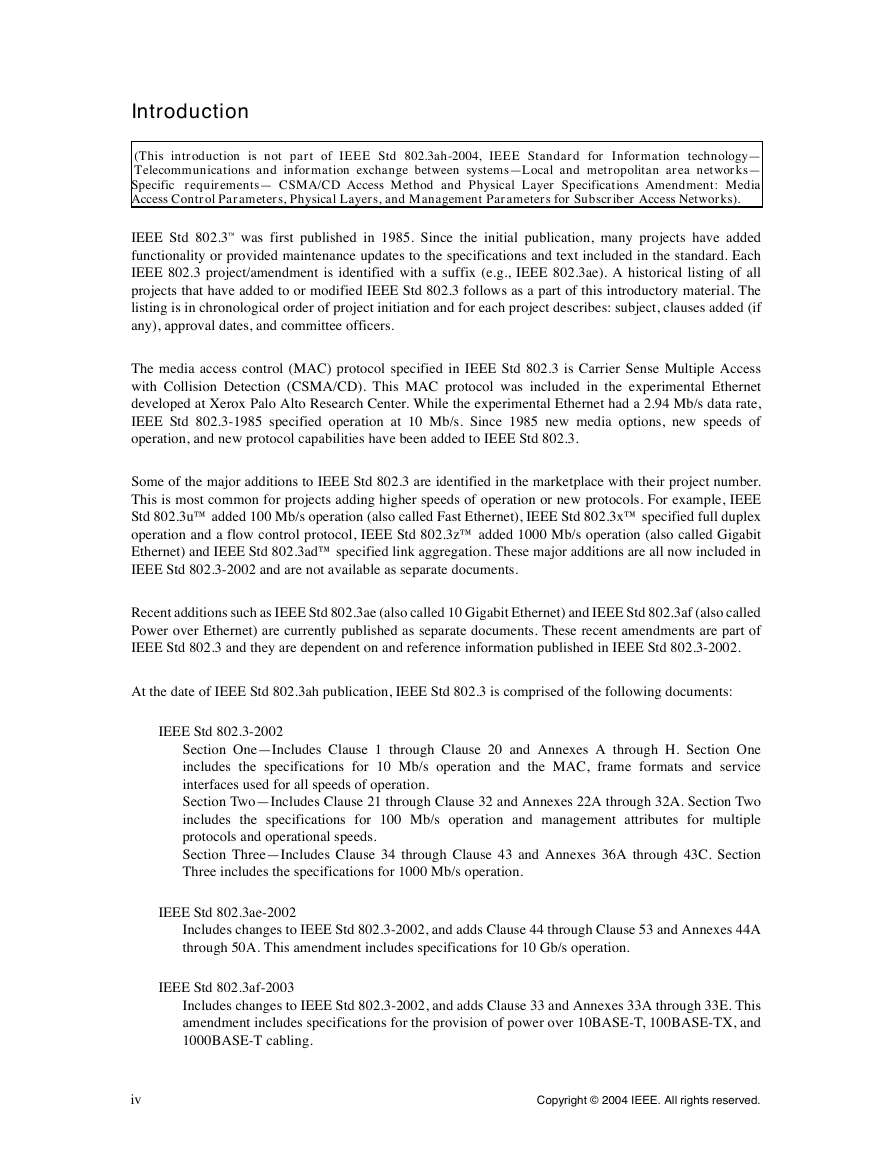
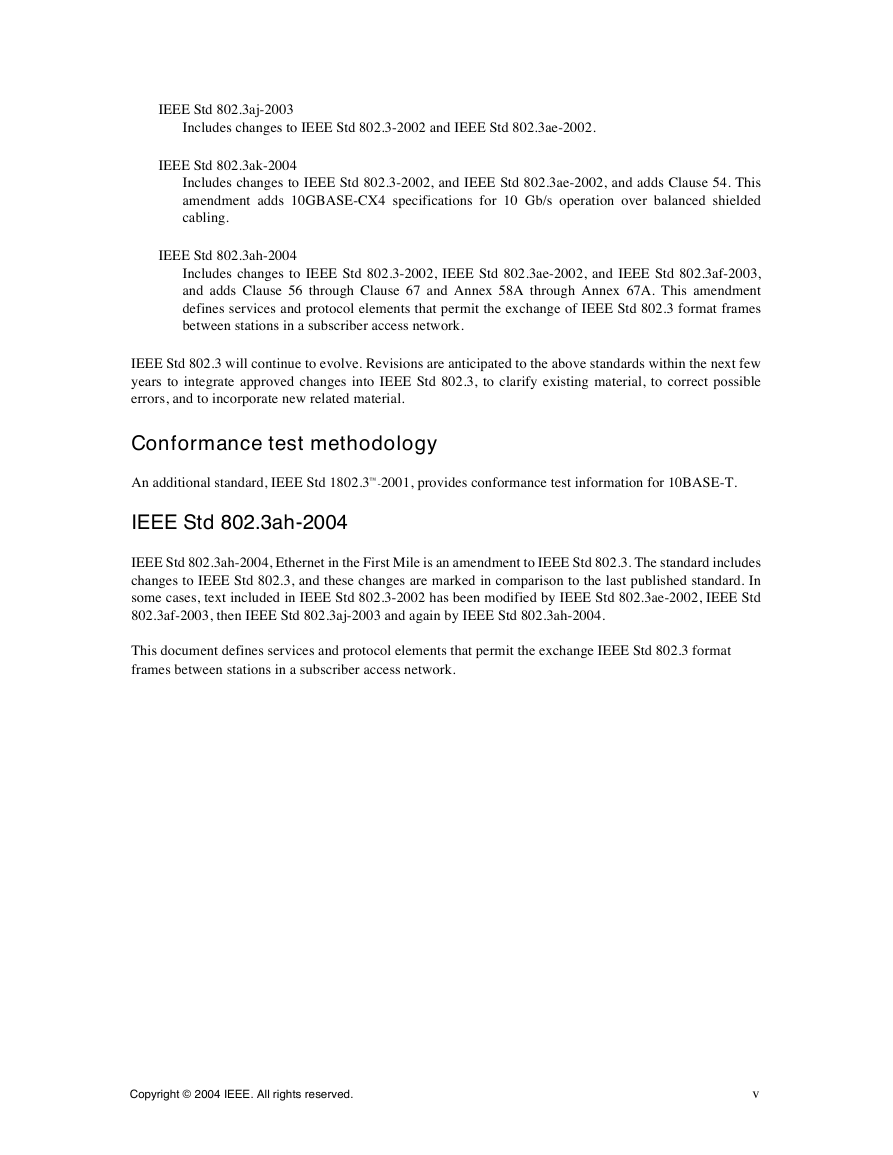
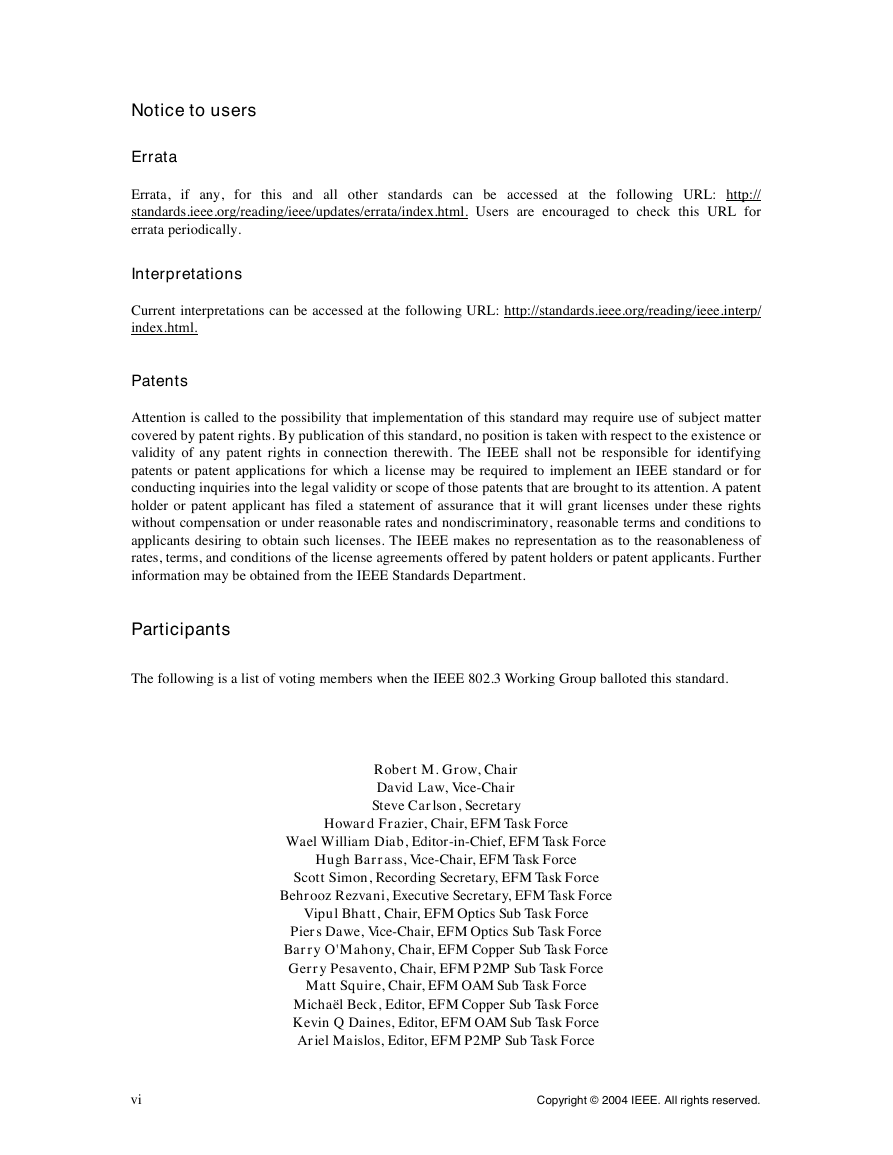
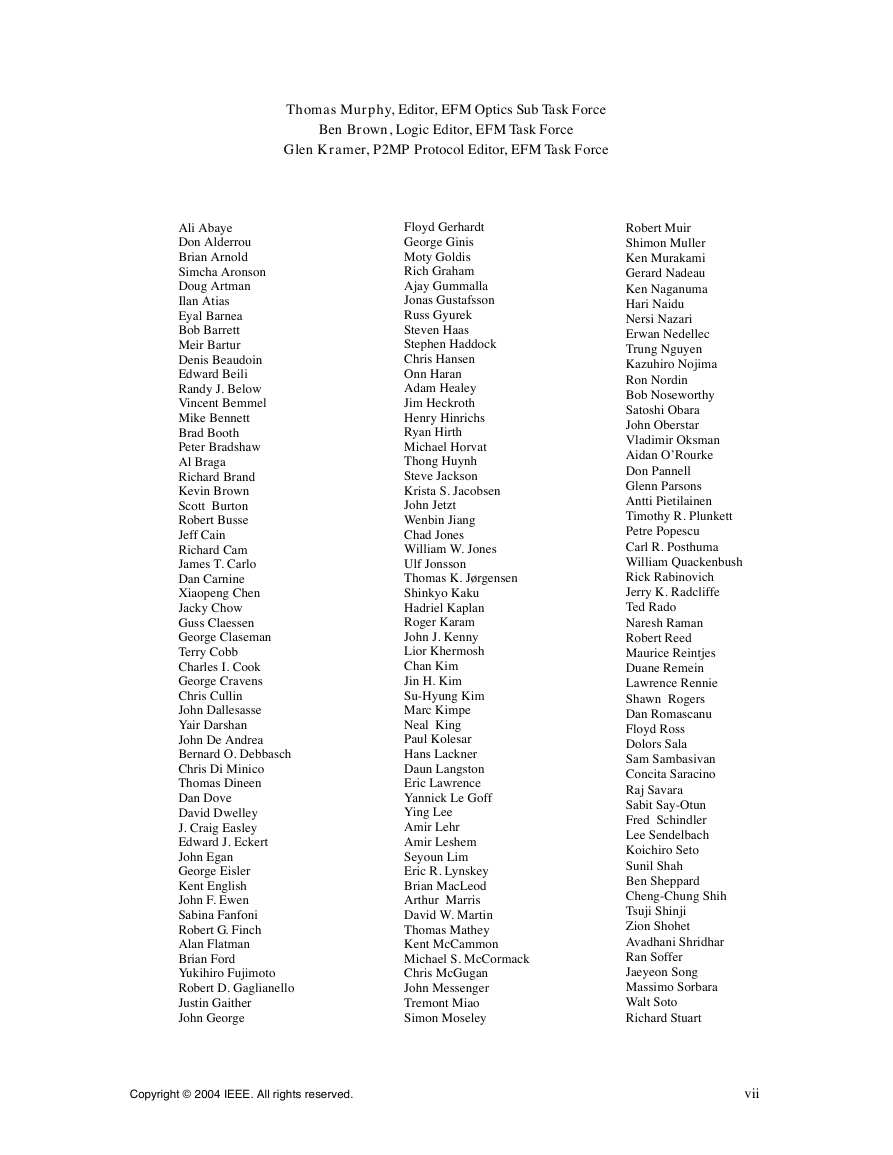








 2023年江西萍乡中考道德与法治真题及答案.doc
2023年江西萍乡中考道德与法治真题及答案.doc 2012年重庆南川中考生物真题及答案.doc
2012年重庆南川中考生物真题及答案.doc 2013年江西师范大学地理学综合及文艺理论基础考研真题.doc
2013年江西师范大学地理学综合及文艺理论基础考研真题.doc 2020年四川甘孜小升初语文真题及答案I卷.doc
2020年四川甘孜小升初语文真题及答案I卷.doc 2020年注册岩土工程师专业基础考试真题及答案.doc
2020年注册岩土工程师专业基础考试真题及答案.doc 2023-2024学年福建省厦门市九年级上学期数学月考试题及答案.doc
2023-2024学年福建省厦门市九年级上学期数学月考试题及答案.doc 2021-2022学年辽宁省沈阳市大东区九年级上学期语文期末试题及答案.doc
2021-2022学年辽宁省沈阳市大东区九年级上学期语文期末试题及答案.doc 2022-2023学年北京东城区初三第一学期物理期末试卷及答案.doc
2022-2023学年北京东城区初三第一学期物理期末试卷及答案.doc 2018上半年江西教师资格初中地理学科知识与教学能力真题及答案.doc
2018上半年江西教师资格初中地理学科知识与教学能力真题及答案.doc 2012年河北国家公务员申论考试真题及答案-省级.doc
2012年河北国家公务员申论考试真题及答案-省级.doc 2020-2021学年江苏省扬州市江都区邵樊片九年级上学期数学第一次质量检测试题及答案.doc
2020-2021学年江苏省扬州市江都区邵樊片九年级上学期数学第一次质量检测试题及答案.doc 2022下半年黑龙江教师资格证中学综合素质真题及答案.doc
2022下半年黑龙江教师资格证中学综合素质真题及答案.doc